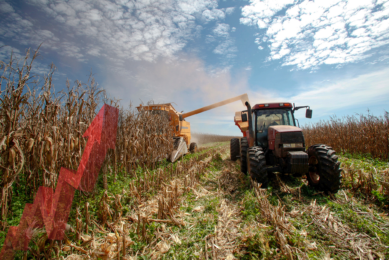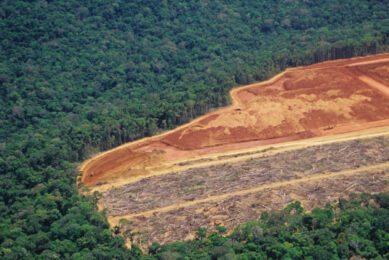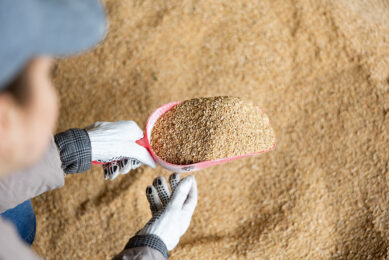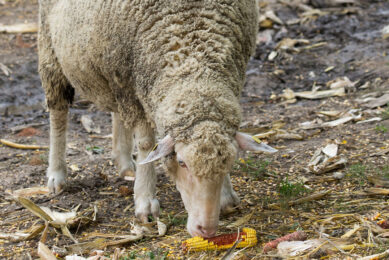Gelatinised extruded feed: Does it matter?
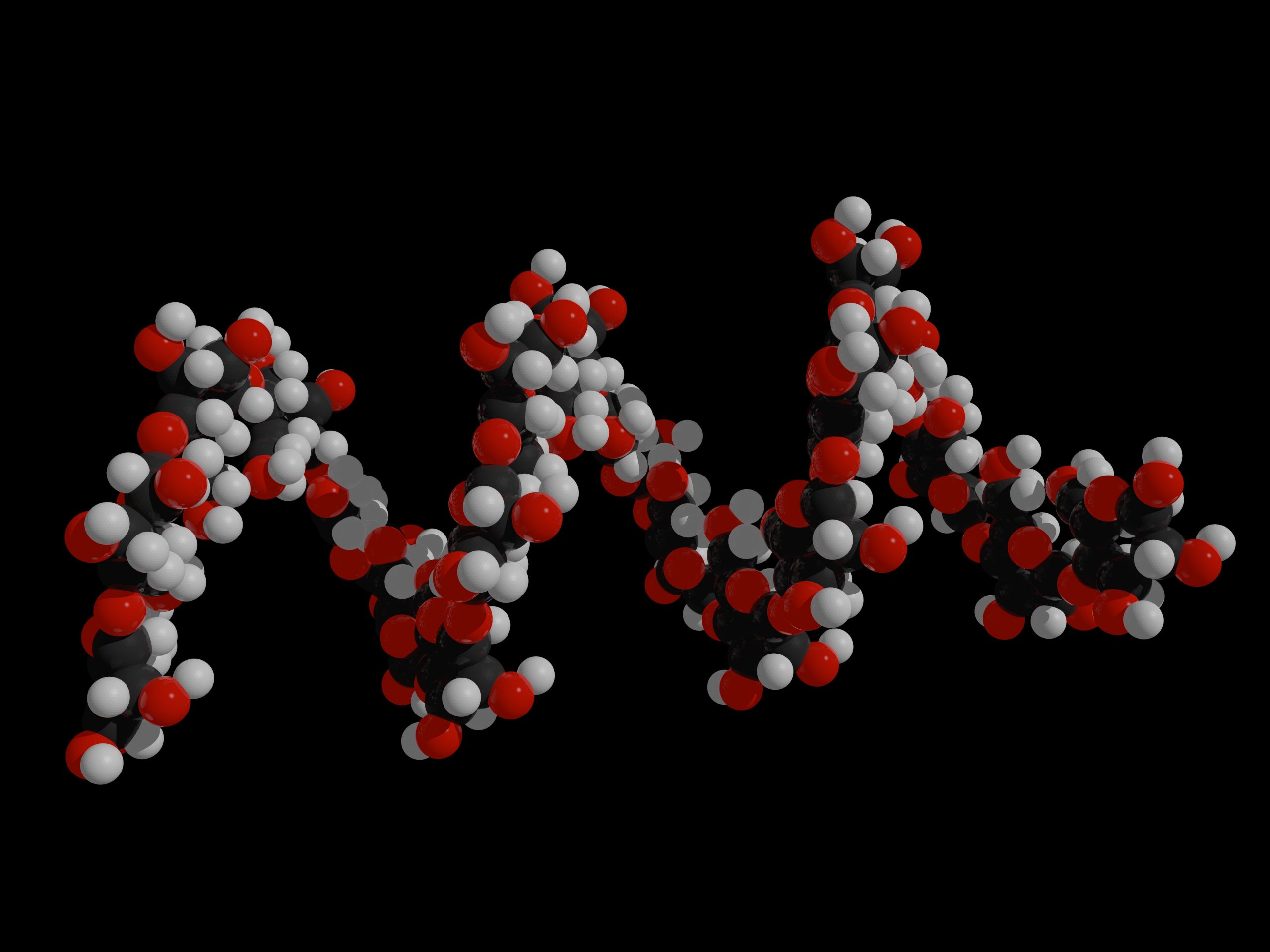
People often refer to the starch in feed as being “gelatinised” during extrusion. We argue that this is false. If we don’t understand the different ways that starches can be cooked, then we misunderstand fundamental aspects of our feed and its performance.
Let’s start by explaining the definition of starch. In the raw (or native) state, starch exists as a distinct particle (or granule) within the cellular structure of the raw material. Native starch exists in two different forms. It is found as either Amylose or Amylopectin. Both are made up of chains of “glucose units”, amylose as linear chains, amylopectin has a branched structure. Sugars are also made up of glucose units, but while a starch molecule may contain from hundreds to hundreds of thousands of glucose units, sugars contain only a few glucose units (we explain later why this is significant).
The starch gelatinisation process
If raw starch is placed in an excess quantity of water (> 60% water), at a low temperature (≈ 20oC), it will absorb a small amount of water and swell slightly. This is referred to as the swelling stage. If the granules were removed from the water, they could be dried back to their original state. The addition of heat with excess water causes additional swelling. As more hot water enters the granule, the starch structure is disrupted, and the amylose begins to diffuse out of the granule. The granule bursts and the collapsed granules now contain mostly amylopectin, held in a matrix of amylose forming a surrounding gel. This process is called gelatinisation. It typically takes 5 to 10 minutes (depending upon the starch source, the particle size, the amount of water, and the temperature). Once gelatinised, the starch can no longer revert to the granular state. It can be powdered and dried, but it still lacks the properties of the original granular starch. It is now water-soluble. The mechanism for starch gelatinisation is shown schematically in Figure 1.
Figure 1 – The gelatinisation of starch in excess water.

The extrusion cooking process
60% is the typical minimum moisture content for starch gelatinisation. Feed extrusion processes are generally carried out at less than 35% moisture content in the extruder barrel. This is not enough water to allow the starch granules to swell and gelatinise. Time spent in the extruder is generally of the order of 20 to 40 seconds, nowhere near the time typically required for gelatinisation. Given the low level of moisture and the short process time, products prepared via extrusion cooking cannot gelatinise, rather they should simply be described as being “cooked”. In the extruder, the starch granules are ruptured through a combination of moisture, heat, pressure and most importantly, mechanical shear. The important role of the shear is presented schematically in Figure 2. The velocity profile developed within the melt (due to the relative motion of the rotating screw and stationary barrel) results in the stretching of the melt. It is the shear stress developed within the melt, due to its effective viscosity at the prevailing shear rate, which is responsible for the molecular transformation of the starch. If the magnitude and the duration of the shear (i.e. the strain) is sufficient, molecular alignment and stress fragmentation will occur. The starch molecules break into shorter chains of glucose units – called dextrins – dextrinisation occurs.
Figure 2 – The role of shear in extrusion cooking.

Starch cooking pathways
The different levels of temperature, moisture and shear rate in cooking processes leads to a range of cooking pathways (Figure 3). The molecular weight profile of the melt which is formed will be directly affected, due to the fragmenting (dextrinisation) of the molecules, leading to different product properties. These differences are discernable in the feed performance as well as by laboratory measurement. Wang et al (2) and (3) investigated the cooking of waxy maize starch at a range of moisture contents, studied using a Differential Scanning Calorimeter (DSC). The Melting Peak Temperature, Tp, was measured at each condition (Figure 4). The results indicated that the melting point was depressed from 243oC (at 0% added Moisture) down to 71oC (at >60% Moisture). They concluded that the conversion of starch (at w < 60% w/w) was due to ‘Dual-Transition Regime’, (wherein a portion of the starch, depending on the moisture content, was undergoing a melting process), whereas at > 60% moisture the conversion was solely due to gelatinsation. One of the authors (Forte) reported on the Gel-Mel Ratio, or the % conversion, in wheat starch via each regime (Figure 4, right graph).
Figure 3 – Pathways for the cooking process (from Whalen, 1997). Note that final molecular weight profile will vary depending on the pathway.

But does this matter in feed?
Note that shear promotes dextrinisation. As the chain-length (molecular weight) of the dextrins is reduced, they become closer to sugars – and more water-soluble than intact starch. The degree of “breakdown” depends on the applied strain, often measured via Specific Mechanical Energy (SME). In animal feeds, too much dextrinisation affects product digestibility, resulting in loose stools/diarrhoea. In aquafeed, where water stability is a critical property, too much dextrinisation results in early breakdown of the feed in water. Note that dextrinisation is not always bad, in animal feeds, insufficient shear (SME) can lead to excessive residual, uncooked starch (and protein). In a direct expanded snack for human consumption, a high degree of dextrinisation is desirable, it allows the snack to immediately breakdown when eaten, providing a “melt in the mouth” characteristic
Figure 4 – (top) Peak melting temperature (via DSC) versus water content for waxy maize starch (below) % conversion versus moisture content for wheat starch.


Conclusion
Often, the transformation of starch-based feed components is just described as “gelatinisation”. We have shown that this over-simplifies what is happening to our feeds during extrusion, unless we realise that extrusion delivers a different type of “cook”, we will not understand changes to critical feed parameters like digestibility, water stability, and feed conversion ratio (FCR). Note that similar effects also apply to the protein components of the feed. Extrusion processes do not operate at sufficient moisture, or provide sufficient time, for true gelatinisation. Do not refer to gelatinisation in extrusion. Instead recognise that the conditions (temperature, moisture, time, and shear) in extrusion delivers a different type of “cook”, and controlling that effectively is critical to feed quality.
References are available on request.
*The authors are presenting a short course on Aquafeed Extrusion Technology at FôrTek (Centre for Feed Technology) in Norway, from 23 to 25 April 2018. Also more courses in other regions are organised later in the year. More information can be found here.
By Dennis Forte, Dennis Forte & Associates, Australia And Gordon Young, Food Industry Engineering, Australia




